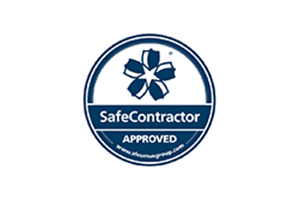The Dangers Of Sleeping In A Room With Mould
 CONTENTS
CONTENTS
- The dangers of mould
- Can you sleep in a room with mould?
- What causes mould to grow in bedrooms?
- How to remove mould from the bedroom
- How to prevent mould in the bedroom
- Get in touch
Mould in the bedroom is more than just an unsightly nuisance; it poses real health risks and can disrupt your sleep. Unfortunately, it is common to find mould in the bedroom due to its humid conditions. You must bring in mould removal professionals to remediate it as soon as you spot it growing in your home.
At ICE Cleaning, our mould remediation specialists are available nationwide, 24/7, 365 days a year. Our mould removal services consist of a thorough nine-stage process that can eliminate all the mould in your home, including mould in the air.
Keep reading to learn about how sleeping in a room that contains mould can harm your health.
The dangers of mould
Mould releases allergens, irritants, and occasionally toxic substances. Inhaling, ingesting, and touching mould can put you at risk of various health issues including allergic reactions and respiratory infections. People with asthma or allergies and other pre-existing health conditions are particularly vulnerable to more serious reactions when exposed to mould spores.
Sleeping with mould in the bedroom is particularly harmful as you will be exposed to it for long periods of time on a regular basis and will likely be inhaling lots of spores.
The harmful fungus can also damage your property and possessions if left unchecked. It will slowly eat away at organic material like certain fabrics and building materials, and even wooden furniture.
Can you sleep in a room with mould?
Mould in the bedroom can significantly impact your sleep quality. This is because mould spores in the air can irritate your respiratory system and trigger allergies, and sneezing, coughing, and eye irritation can throw off your sleep rhythm. For individuals with asthma or other respiratory conditions, mould exposure can exacerbate symptoms further, disturbing rest.
According to studies, mould exposure is correlated with sleep problems like insomnia, excessive daytime sleepiness, and snoring.
Beyond physical health effects, there is also evidence suggesting mould can have a psychological impact, such as causing stress and anxiety, which can affect sleep, as well.
What causes mould to grow in bedrooms?
Mould thrives in environments that are damp, dark, and poorly ventilated. Bedrooms can become prime spots for mould growth due to several factors.
High humidity levels
As we sleep, we exhale lots of water vapour into the air which can make the room very humid. This excess moisture settles on surfaces and can encourage mould growth. If the property is not sufficiently heated, the warm, moist air can cause condensation to form on cold surfaces, like windows and walls, making them damp.
Poor ventilation
A lack of proper airflow contributes significantly to the development of mould. When air does not circulate well, it allows humid air to get trapped in a room, as well as behind furniture.
Leaking pipes or roofs
Water intrusion from leaking pipes or roofs makes surfaces damp and can trigger rapid mould growth. Often hidden within walls or ceilings, these leaks go unnoticed until visible signs of damage and mould growth appear.
Mould can also feed off of wallpaper and paint that contain organic material, so moisture on walls and ceilings can quickly lead to a serious mould problem.
You can learn more about what causes mould to grow in the bedroom in this blog.
How to remove mould from the bedroom
It is essential to tackle this issue as soon as you spot the first signs of mould growth to protect your health and minimise the amount of damage mould can cause in your home.
Although it may be tempting to do so, DIY mould removal methods can exacerbate the problem. Mould spores are easily disturbed and can spread further when improperly handled, such as when scrubbed. Moreover, without professional-grade equipment and protective gear, you risk inhaling or touching these harmful spores. Experts in mould remediation follow strict guidelines to ensure safety and effectiveness during removal processes.
Beyond health concerns, identifying the root cause of mould growth necessitates a thorough assessment only professionals can provide. They have tools for moisture measurement and thermal imaging that pinpoint hidden sources of dampness that can lead to mould.
Hiring professionals guarantees not only will the visible mould be addressed but also its underlying causes. Teams specialising in mould remediation will use professional products and techniques which ensure complete eradication without damaging your property or compromising your indoor air quality.
You can be sure they will safely eliminate all of the mould from your home. They can even advise on how to prevent it returning to keep your home safe and mould-free in the future.
How to prevent mould in the bedroom
Ventilation is crucial
Good airflow significantly reduces mould growth. Make sure you air out your bedroom daily by opening windows for short periods, even during colder months. For rooms where natural ventilation is not enough, consider using an extractor fan or dehumidifier.
Air conditioning units can also help control humidity levels but they must be cleaned regularly to avoid becoming sources of mould themselves.
Monitor humidity levels
The ideal indoor humidity level is between 40% and 60%. Use a hygrometer to monitor these levels within your home. If the air tends towards high humidity, invest in a good quality dehumidifier to keep moisture under control.
Drying clothes indoors can increase moisture content significantly so, if possible, dry them outside or in well-ventilated indoor areas away from bedrooms.
Clean your home regularly
Make sure you regularly remove dust, dirt, and dead bugs from your bedroom, particularly from window frames and sills where condensation collects most often. These can provide mould with a sufficient food source should it start to grow.
Ensure sufficient airflow
Furniture should not touch exterior walls directly as this creates cold spots prone to condensation and allows humid air to get trapped. Check behind furniture and inside closets for signs of mould growth and damp regularly since these less visible areas are often hotspots for unnoticed mould growth.
Get in touch
If it is an emergency, our Dewpoint-accredited technicians can be on site within a matter of hours, wherever you are in the UK.
To find out more about our mould remediation services, contact our friendly team on 0208 066 0360 or enquiries@icecleaning.co.uk. They will be happy to provide you with a free, no-obligation quote.

Speak with me today,
I’m here to help
By asking you a few questions either via phone or email I can immediately provide a realistic estimation of the cost.

Why choose us?
- Cater to a wide variety of cleaning situations
- Nationwide coverage, available 24/7
- Cater to commercial and domestic clients
- Free survey provided prior to quotation
- Emergency response team
- Offer a bespoke service designed to suit all your needs
- All technicians hold professional health and safety qualifications, including BICSc, IOSH, Dewpoint Professional & Safe Contractor
We’re fully accredited
We place best practise, professional expertise and health and safety at the core of our business. We’re fully compliant with all legal obligations. You can view a list of our accreditations below, or visit our Health & Safety page for more information.











-RGB-small.1707319151.jpg)




















